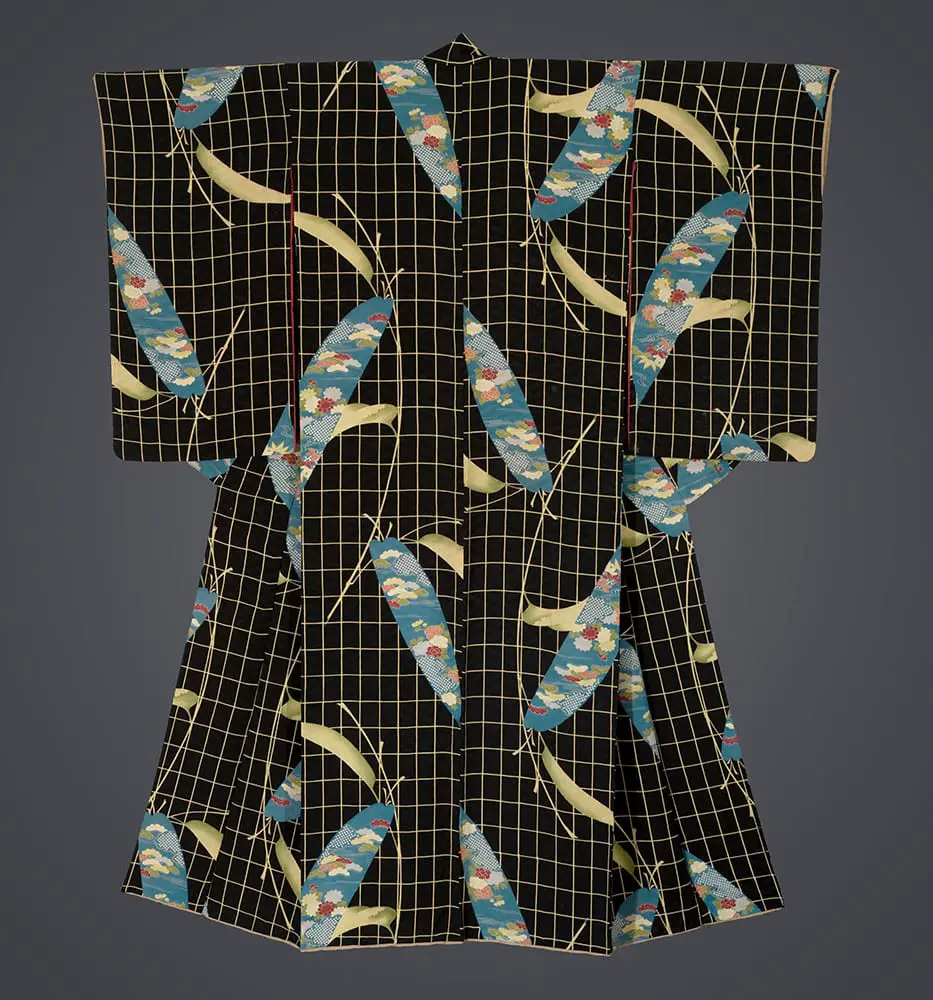This textile displays a striking geometric composition that beautifully exemplifies the intersection of traditional Japanese design with early 20th century modernist sensibilities. The artwork features a sophisticated interplay between organic and geometric elements set against a bold black background with a precise golden lattice grid.
The primary motif consists of flowing, ribbon-like bands in a soft blue-gray tone, decorated with traditional Japanese cloud patterns (kumo), chrysanthemum flowers, and geometric elements in various colors including red, white, yellow, and coral. These decorative bands curve gracefully across the composition, creating dynamic diagonal movements that contrast beautifully with the rigid mathematical precision of the underlying grid structure.
The stenciled bamboo leaves mentioned in the description appear as golden yellow organic forms that seem to float between and around the patterned bands, adding another layer of natural imagery to the design. The lattice pattern background creates a strong structural foundation that recalls the geometric abstraction popular in Art Deco and early modernist movements of the 1910s-1940s period.
This design evokes several artistic movements. The geometric grid system and bold contrasts are reminiscent of Art Deco aesthetics, while the mathematical precision of the lattice pattern suggests influences from Constructivism and early geometric abstraction. The overall composition demonstrates how Japanese textile artists of this period were synthesizing traditional motifs with contemporary international design trends, creating works that feel both thoroughly Japanese and remarkably modern.
The rinzu chirimen silk technique allows for the crisp definition of both the geometric and organic elements, showcasing the technical mastery required to achieve such precise registration between the various design layers.
It features a bachi-eri (folded collar) and bears several small stable white mold spots. Measuring 47 inches (119 cm) from sleeve-end to sleeve-end, it stands at 59 inches (150 cm) in height.
This artwork is featured on page 214 of Art Kimono: Aesthetic Revelations of Japan, 1905-1960. This book, published by Yorke Antique Textiles, can be previewed or purchased on our website here.
.avif)








